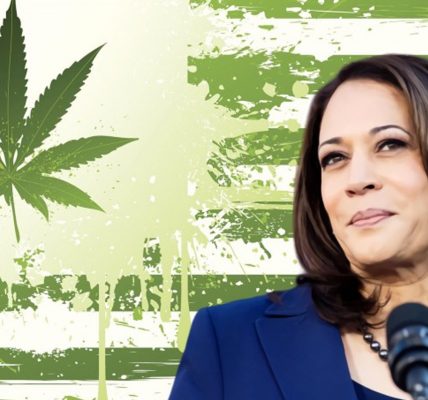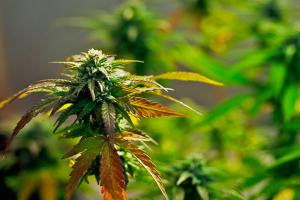The state of America’s prison system is one of the most pressing social justice issues today, closely tied to the War on Drugs. The staggering statistics surrounding mass incarceration and the privatization of prisons highlight the urgent need for reform.
While the need for prison reform is something we have covered before, the post-era from the COVID-19 pandemic and the ongoing fight against systemic racial injustice have further amplified public outcry, leading to protests and civil unrest across the globe in recent years. It is essential to understand the key issues plaguing the U.S. prison system and the unacceptable practices that demand immediate attention.
The Crisis of Prison Overcrowding in the U.S.
The United States continues to lead the world in incarceration rates, surpassing even much larger countries like China, India, and Russia. According to the Bureau of Justice Statistics (BJS), 2.1 million adults were incarcerated in U.S. prisons and jails at the end of 2020, a slight decrease due to pandemic-related early releases but still alarmingly high.
Over the last 40 years, there has been a 500% increase in incarceration rates, driven not by rising crime rates, but by changes in laws and policies. This has resulted in severe overcrowding in prisons and placed immense financial burdens on states. Moreover, it is clear that large-scale incarceration is not an effective way to ensure public safety. With mounting evidence against mass incarceration, Americans are demanding comprehensive prison reform.
Despite recent decreases in incarceration rates, Black Americans remain disproportionately affected. As of 2021, the imprisonment rate for Black individuals was still nearly twice that of Hispanic Americans and more than five times that of white Americans. Among Black men aged 35 to 39, 1 in 20 were incarcerated in state or federal prison.
The Business of American Prisons: Privatization and Profit
The War on Drugs and tougher sentencing laws have led to a massive increase in the U.S. prison population, and this expansion gave rise to the for-profit private prison industry. Private prisons, run by third-party companies under government contracts, profit from the incarceration of individuals. These companies receive money based on the number of inmates and the length of their sentences, creating an incentive to keep prisons full.
From 2000 to 2016, the number of people housed in private prisons increased five times faster than the total prison population. As of 2023, about 8% of U.S. prisoners are housed in private facilities, with the proportion higher among detained immigrants. These facilities often lack transparency and oversight, raising concerns about human rights violations.
A paper published by the University of Baltimore Law Review concluded that for-profit prisons violate constitutional protections, including due process and equal protection. The authors argue that “private prisons are abhorrent on moral grounds” and call for renewed scrutiny from the U.S. Supreme Court.
Mass Incarceration and Cannabis Prohibition
Mass incarceration in the U.S. is deeply intertwined with the War on Drugs, particularly cannabis prohibition. With more than 40% of all drug arrests being related to cannabis, it’s clear that the criminalization of this plant has played a significant role in fueling the prison population. This is especially troubling given that many states have now legalized cannabis to some extent.
Caroline Pineau, owner of Stem Haverhill, a cannabis retail store in Massachusetts, noted that ending cannabis prohibition would be a productive first step toward long-term criminal justice reform. “A huge portion of mass incarceration comes from disproportionate drug sentences that largely impact Black, brown, and Latinx populations,” she explained.
Please text PARDON to 420-420 to join the effort to free Edwin Rubis from prison for a non-violent cannabis crime
Incarceration Does Not Treat Substance Use Disorders
The current approach of incarcerating people for substance use disorders is not only ineffective but also a massive misuse of resources. The possession or use of drugs should be addressed as a public health issue, not a criminal justice matter. In fact, about 65% of prisoners—nearly 1.5 million individuals—suffer from addiction, yet only 11% receive any form of substance abuse treatment while incarcerated. Without proper treatment, the vast majority of these individuals resume abusing drugs upon release.
Incarceration, which costs approximately $32,000 per prisoner per year, is not a cost-effective way to address addiction. These statistics illustrate one of the many social injustices linked to America’s prison system and its relationship to the War on Drugs. It’s time to shift away from incarceration as a solution for addiction and focus on treatment and rehabilitation instead.
The Path Forward: Ending the Injustice
Reforming the U.S. prison system is a monumental task, but it is crucial to addressing the social injustices tied to the War on Drugs. The use of prison labor, the profit-driven private prison system, and the disproportionate incarceration of people of color all demand immediate attention.
Recidivism rates also highlight the need for comprehensive reentry programs. Currently, two-thirds of prisoners are rearrested within three years of their release, and more than 75% are rearrested within five years. Without proper support and rehabilitation, these individuals are trapped in a cycle of incarceration, further burdening their families and communities.
Reforming the prison system and addressing the War on Drugs is not just about correcting past wrongs—it’s about building a more just and equitable future. By confronting the unacceptable practices within America’s prison system, we can begin to dismantle the structures that perpetuate inequality and injustice. The time for prison reform is now, and we cannot wait any longer to act.
Please text PARDON to 420-420 to join the effort to free Edwin Rubis from prison for a non-violent cannabis crime




